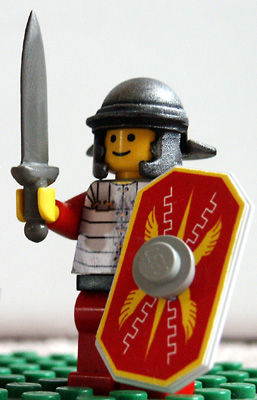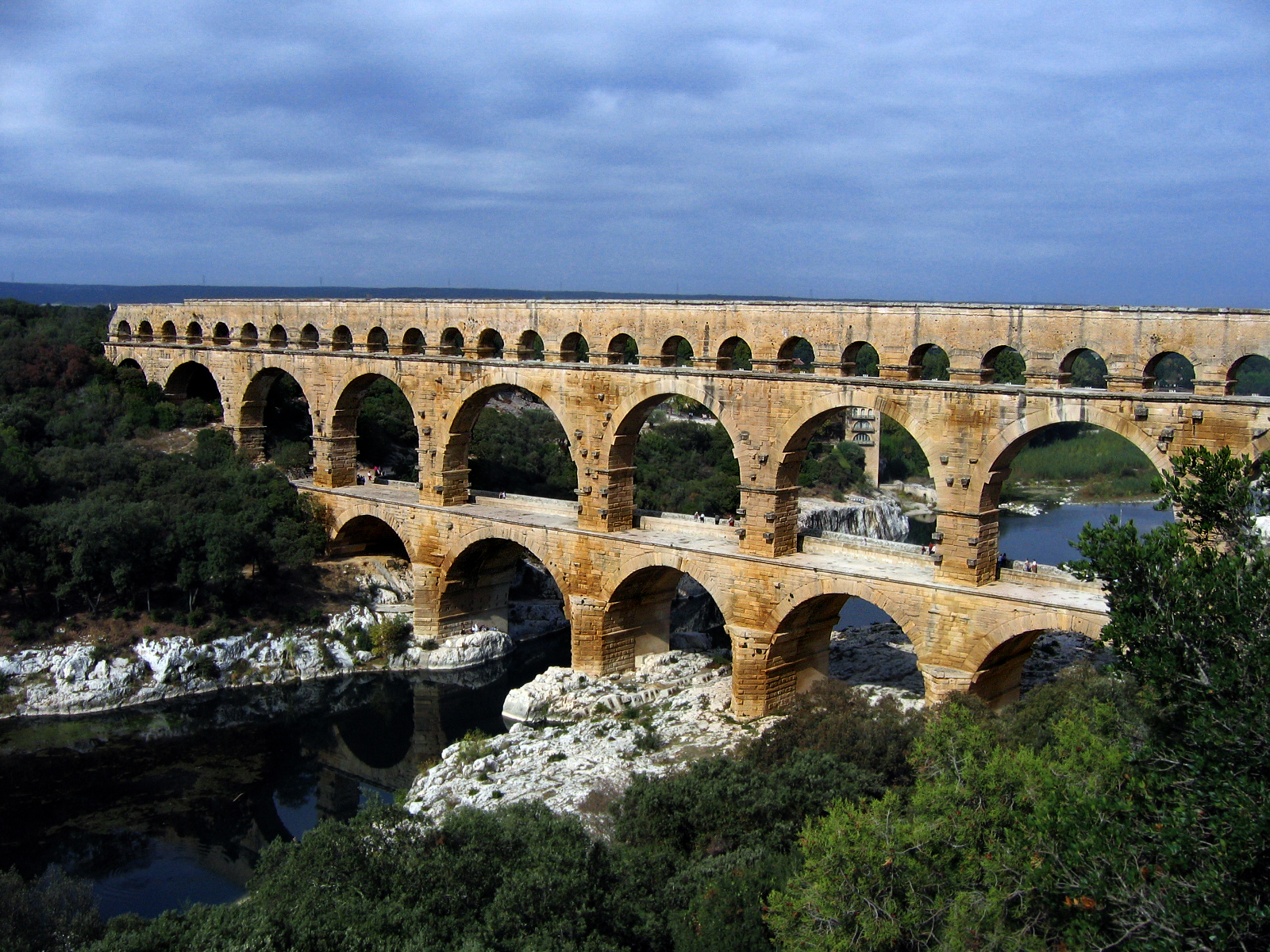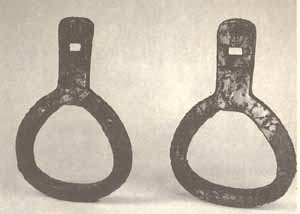Quick Housekeeping: I use several images in here that I linked from other sites. I do not claim copyright for them, and I link to the originating page in each case. If there is an issue in using them, then I will remove the images. I mean no harm, and, I hope, actually help the authors of these images to enjoy a somewhat increased audience as a result of my using them. I won’t copy the images and link to the copies, as that would result in a direct copyright violation. What I’m doing now is a bit questionable, but I believe that this is OK for this one purpose. I mean nothing but respect to the owners of the images.
What’s the Big Deal?
 Infrastructure is usually considered to be a dull, lifeless subject. No one wants to talk about it or hear about it. There’s no fast cars or buxom ladies. We always picture some guy with a buzz cut, heavy glasses, a short-sleeved white dress shirt, ugly tie and a pocket protector when we think of “infrastructure.” Hollywood doesn’t make movies about infrastructure, and the books about it tend to be found in “Reference,” or “Non Fiction.”
Infrastructure is usually considered to be a dull, lifeless subject. No one wants to talk about it or hear about it. There’s no fast cars or buxom ladies. We always picture some guy with a buzz cut, heavy glasses, a short-sleeved white dress shirt, ugly tie and a pocket protector when we think of “infrastructure.” Hollywood doesn’t make movies about infrastructure, and the books about it tend to be found in “Reference,” or “Non Fiction.”
 However, infrastructure is important. Very, very important. It is absolutely necessary to the establishment, survival and growth of any type of civilization. It is critical to war, and it is vital to peace. In short, we’re screwed without infrastructure. With infrastructure, we can do anything. Anything.
However, infrastructure is important. Very, very important. It is absolutely necessary to the establishment, survival and growth of any type of civilization. It is critical to war, and it is vital to peace. In short, we’re screwed without infrastructure. With infrastructure, we can do anything. Anything.
I am hoping that, by the time you’ve finished reading this article, you will have developed a new understanding and appreciation for the concept of infrastructure. Infrastructure is cool. Way cooler than the kids hanging around back smoking those funny cigarettes.
What is Infrastructure?
Infrastructure is support. It is the layer below the one you see. And the layer below that, and the layer below that, and so forth. Infrastructure is the highway system, the railroad tracks, the schools, the electrical grid, the monetary system, the legal code. Infrastructure is everywhere.
History
Let me first qualify this by saying that I am, by no means, an expert on history. However, I do know a bit more about some bits of history than your average bear, from the simple fact that I’ve walked around places like Pompeii, Mykonos and Athens.
 When you think of the Roman Empire, you always think of the Legionnaire. The tough, stalwart foot soldier that Rome sent to conquer territory and quell rebellion. However, it was not the legionnaires themselves that created and maintained the Roman Empire; it was the way they were trained, deployed, supported and equipped that made them such formidable foes. It was the infrastructure of the Roman Civilization that made it so successful. Arguably, a significant contributor to the decline of the Roman Empire was a failure to maintain the infrastructure of the civilization.
When you think of the Roman Empire, you always think of the Legionnaire. The tough, stalwart foot soldier that Rome sent to conquer territory and quell rebellion. However, it was not the legionnaires themselves that created and maintained the Roman Empire; it was the way they were trained, deployed, supported and equipped that made them such formidable foes. It was the infrastructure of the Roman Civilization that made it so successful. Arguably, a significant contributor to the decline of the Roman Empire was a failure to maintain the infrastructure of the civilization.
One thing that Rome did was to Send in the Clowns Administrators. After the Legions had kicked butt, the newly conquered territory was then considered a part of Rome. Rome was run by administrators that placed a premium on infrastructure. Roman citizens had access to this infrastructure. Rome had, for lack of a better term, history’s first recognized middle class. Before Rome, most of the goodies went to the upper crust, and the average Joe could just go pound sand.
 Most of the infrastructure accomplishments of the Roman Empire were not actually invented by the Romans. They adapted, refined and mass-produced infrastructure. Things like aqueducts, amphitheaters, and even the famous Roman sewer system weren’t new. The Romans simply made them more accessible, efficient and ubiquitous. (If you don’t think a sewer system is important, try not using the toilet for a couple of days. I guarantee that it will change your mind.)
Most of the infrastructure accomplishments of the Roman Empire were not actually invented by the Romans. They adapted, refined and mass-produced infrastructure. Things like aqueducts, amphitheaters, and even the famous Roman sewer system weren’t new. The Romans simply made them more accessible, efficient and ubiquitous. (If you don’t think a sewer system is important, try not using the toilet for a couple of days. I guarantee that it will change your mind.)
No, much as Westerners like to think that they were the pinnacle of civilization, even a cursory look around will show that many of the accomplishments that we attribute to Western civilizations actually originated in places like Persia (Iran) and Babylonia (Iraq). China is also known to have contributed many important things to the world, as have Arabic civilizations. I’ll get to their contributions in just a bit.
There is an amazing book, called “Guns, Germs and Steel,” written by a chap named Jared Diamond. This book covers the basis of why Western civilization seems to have come out of the scrum in such good shape, while others haven’t. He touches upon infrastructure, but actually goes even deeper. Infrastructure needs raw materials, and he talks about these raw materials. I’m taking the easy way out, and just covering some of the things he mentions in a different way.

The Romans didn’t have a very efficient numerical system, although they did have one (we still use it when we want to get fancy and pretentious, without actually imparting useful information). The truly useful number system we all know and hate at tax time is called the Arabic System. Why is it called the “Arabic System”? Because that’s where it came from (well, not really). We call it “Arabic,” because the Arabs are the ones that turned it into an infrastructure. We call aqueducts by their Roman name, because the Romans made them into an infrastructure. We call plumbing by the Roman name “plumb,” because they are the ones that made it into an infrastructure, even though they didn’t invent it. (but they made the darn pipes out of lead, which resulted in problems).
 Two inventions that the Romans never had were the Stirrup and the Lateen Sail. These simple inventions rocked the world, but not until they were made into a useful infrastructure.
Two inventions that the Romans never had were the Stirrup and the Lateen Sail. These simple inventions rocked the world, but not until they were made into a useful infrastructure.
By the way, the stirrup came from China, and the Arabs invented the lateen sail.
The stirrup basically helps you to get a lot more utility from your horse, which had almost purely military advantages (the Mongols had these wicked bows, and the stirrup helped them to shoot from horseback), and the lateen sail (along with an extended keel), allowed ships to sail against the wind, removing the need for oars or the perfect breeze.
 Despite their importance, these inventions were chiefly of local significance, until the Mongols used the stirrup to terrible purpose, and the Europeans adapted the lateen to their carracks and caravels.
Despite their importance, these inventions were chiefly of local significance, until the Mongols used the stirrup to terrible purpose, and the Europeans adapted the lateen to their carracks and caravels.
The lesson here, is that, no matter how revolutionary an invention or concept, it won’t change the world until it achieves the status of infrastructure. Until it becomes everyday and ordinary. Until people don’t even think about it. Until it becomes truly accessible.
Since those days, a lot of changes have come about. The history of infrastructure, and the infrastructure of history, could easily fill many volumes. I just wanted to give a very brief glimpse at the part that infrastructure has played in our history.
Types of Infrastructure
Infrastructure comes in three basic flavors. I’ll cover each in more detail further on:
- Physical Infrastructure
- This is things like railroad tracks, roads, power grids, telephone systems, etc.
- Logical Infrastructure
- This is knowledge, educational systems, treaties and process definitions, legal codes, financial systems, etc.
- Social Infrastructure
- This is Societal ‘norms,’ customs, etc. This one is very hard to ‘pin down,’ but just as important to a civilization as the other two.
These three basic infrastructures are usually combined in many ways to give us the infrastructure we all know and love (or curse).
Physical Infrastructure
 Physical infrastructure is a concrete manifestation of infrastructure. It is the easiest to identify and the most obvious. When we think of ‘infrastructure,’ we are generally thinking of physical infrastructure. We see physical infrastructure all around us. Some of the more basic examples are roads and canals. Some of the more complex examples might be power distribution systems, railroads, telephone systems and the medium you are probably using right now, to view this page: The Internet, which is actually an amalgam of several different infrastructures, some of which are physical, and some of which are logical. In fact, most of what you may think of as ‘infrastructure’ is often a combination of physical and logical infrastructure. You see the physical infrastructure, but there’s almost always a hefty component of logical infrastructure involved.
Physical infrastructure is a concrete manifestation of infrastructure. It is the easiest to identify and the most obvious. When we think of ‘infrastructure,’ we are generally thinking of physical infrastructure. We see physical infrastructure all around us. Some of the more basic examples are roads and canals. Some of the more complex examples might be power distribution systems, railroads, telephone systems and the medium you are probably using right now, to view this page: The Internet, which is actually an amalgam of several different infrastructures, some of which are physical, and some of which are logical. In fact, most of what you may think of as ‘infrastructure’ is often a combination of physical and logical infrastructure. You see the physical infrastructure, but there’s almost always a hefty component of logical infrastructure involved.
Logical Infrastructure
 A perfect example of a logical infrastructure is the Code of Law found in almost any human community. This can be everything from the Condominium by-laws to the Constitution of the United States of America. Laws are developed over a long period of time. The older they are, the more complex they become. It is not hyperbole to say that the Code of Law is, quite possibly, the single biggest and most valuable asset of any civilization.
A perfect example of a logical infrastructure is the Code of Law found in almost any human community. This can be everything from the Condominium by-laws to the Constitution of the United States of America. Laws are developed over a long period of time. The older they are, the more complex they become. It is not hyperbole to say that the Code of Law is, quite possibly, the single biggest and most valuable asset of any civilization.
I know that we all like to dis lawyers and get annoyed by all the restrictions and duties imposed by law, but laws exist for a very good reason. I remember a blurb for a TV show that went something like: “Imagine that you could have sex with anyone you want. Imagine that anyone who wants can have sex with you.”
Laws constrain us, and they constrain others. They dictate decorum and protocol. They ensure that we don’t get overrun by the strongest and most aggressive members of the society, and that they won’t get overrun by the smartest and least ethical members of society.
I have lived in relatively lawless places. I treasure our laws.
Other examples of logical infrastructure are process descriptions, specifications, financial reciprocity agreements, treaties, scholastic testing standards and licensing requirements.
Social Infrastructure
As I said, this one is difficult to ‘pin down.’ It can be very controversial. Nonetheless, social infrastructure is a critical component of any society.
An obvious component of social infrastructure is the way children are raised. Whether it is by a nuclear family, or by a “clan,” the raising of children is the way that the thousands of unwritten rules of society are communicated. Politeness, honesty, work ethic, aggressiveness, ambition, etc. These are all things that we learn by “osmosis.”
Other examples are the “rules of society” that we observe in our everyday lives as members of Society.
I travel to Japan fairly often. I believe that Japan has some of the finest examples of all three infrastructures in the world.
Japan is a very crowded country. Social infrastructure is absolutely vital there. Just walking through a major train station in Tokyo during rush hour demonstrates several very obvious rules. For example, which side of the escalator you stand on (the left), and which side of the stairs upon which you go up or down (not always the left). How to match the rhythm of the crowd, so you can cross a stream of people to get to the ticket machines. How to say “excuse me” (simu-sayn).
A more serious example might be how people react in emergencies or under stress. Again, Japan provides an incredible example of this. Their emergency services system is amazing, but the way the regular people react is almost as amazing. During the 1995 Kobe Earthquake, the Yakuza, or Japanese Mafia, were even better at helping victims than the authorities in the initial response.
In fact, crime in general is incredibly low in Japan. There are a number of reasons for this, but I sincerely believe that the social infrastructure of Japan is the chief reason.
Social infrastructure is organic. It is very difficult to force. However, the benefits and perils are tremendous.
It is my opinion that social infrastructure is usually ignored, as it is so difficult to control. Ironically, the best people at guiding and crafting social infrastructure are marketers and propagandists. They study society, and apply small “course corrections” to make it move in their desired direction. They know that it is virtually impossible to simply construct it of whole cloth. A successful social infrastructure project may take generations.